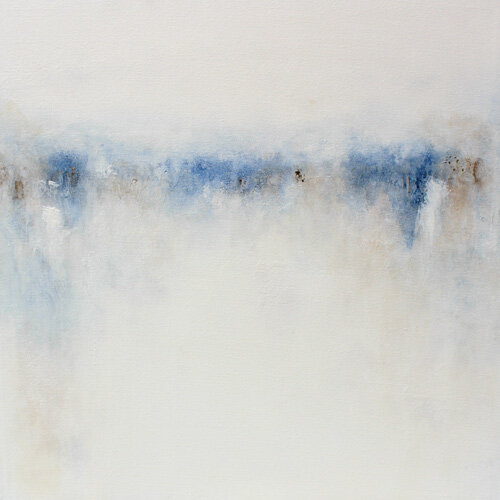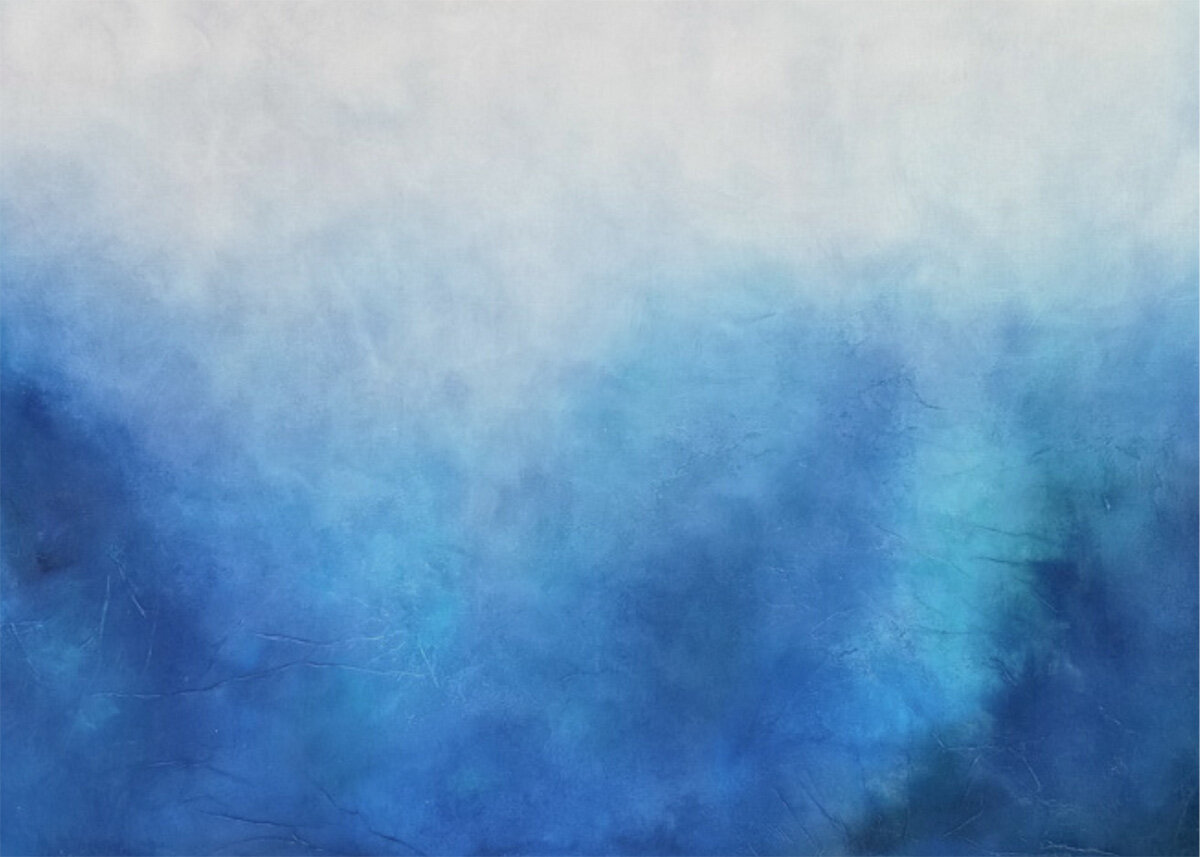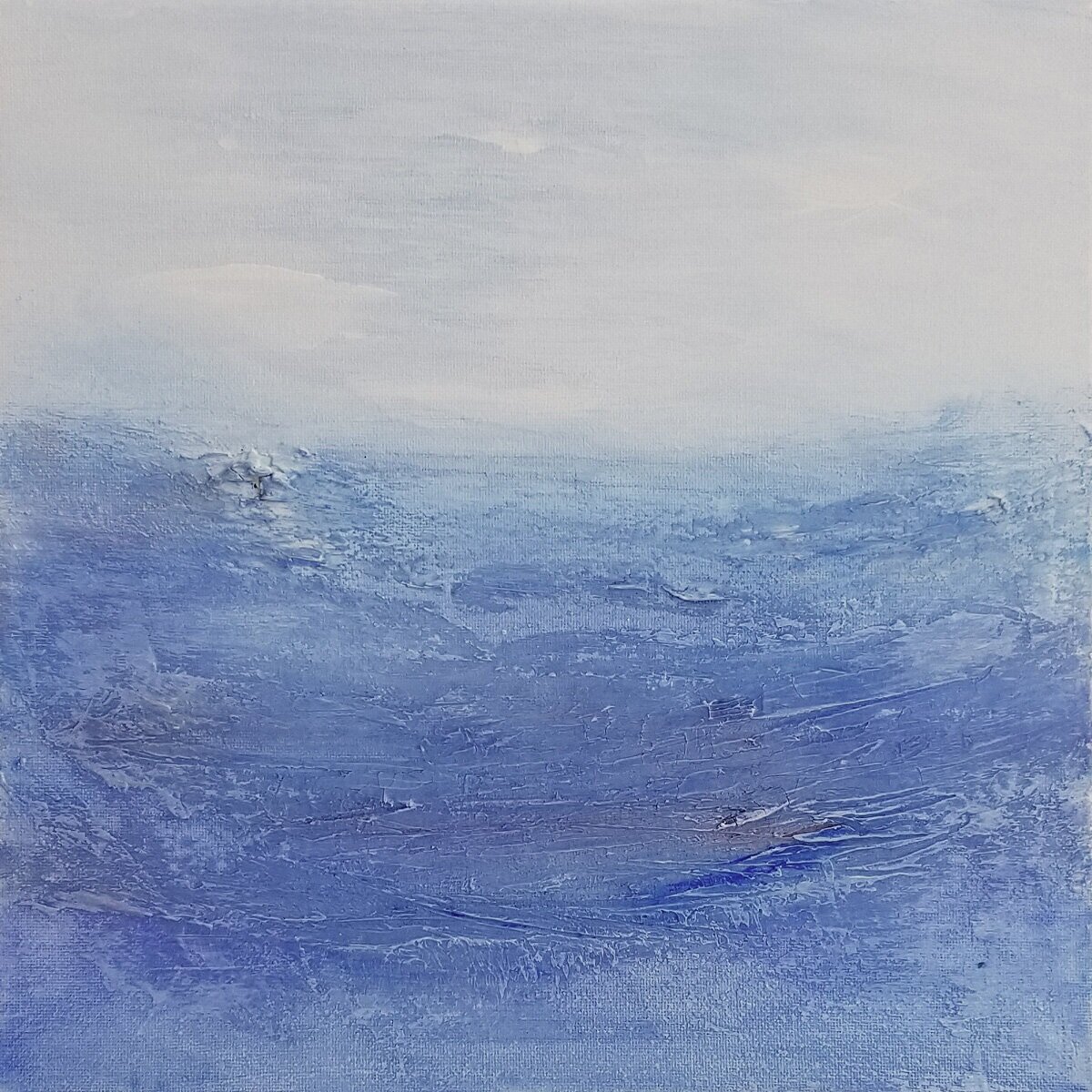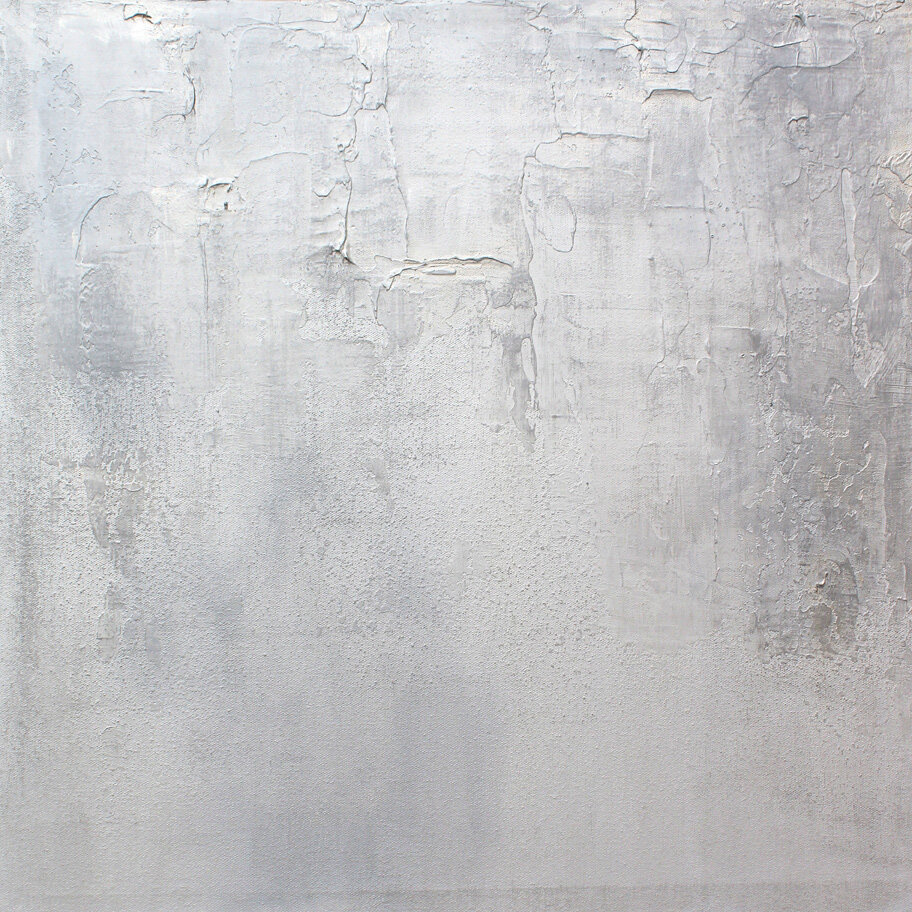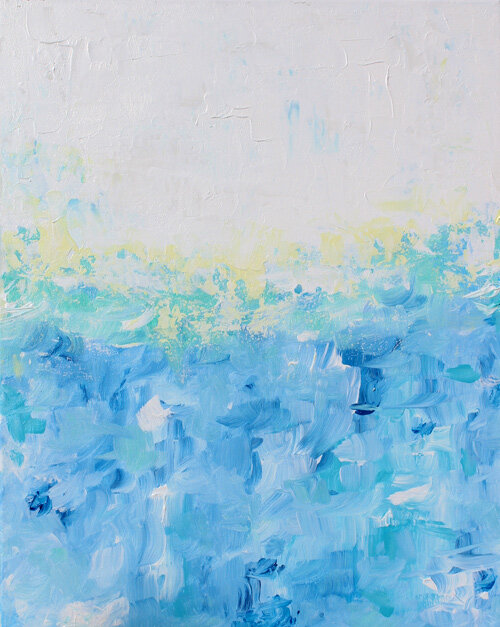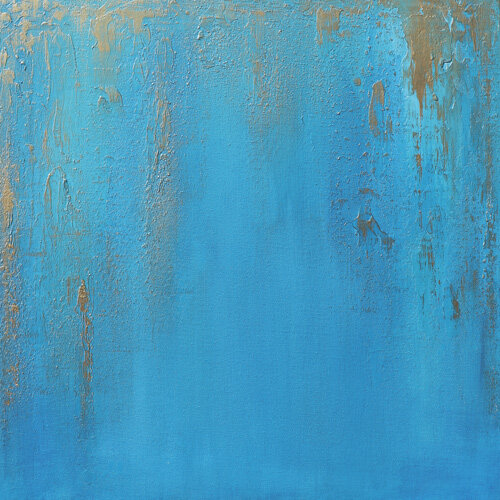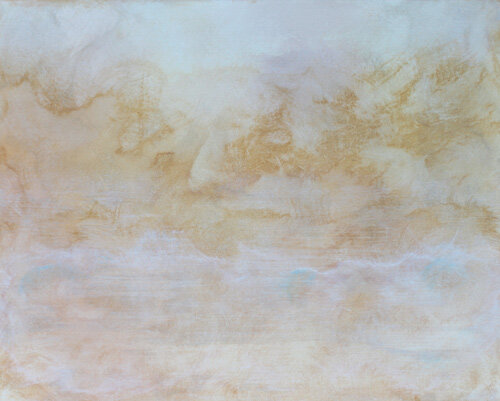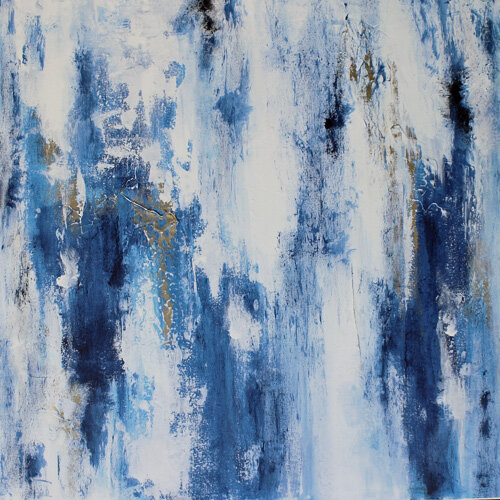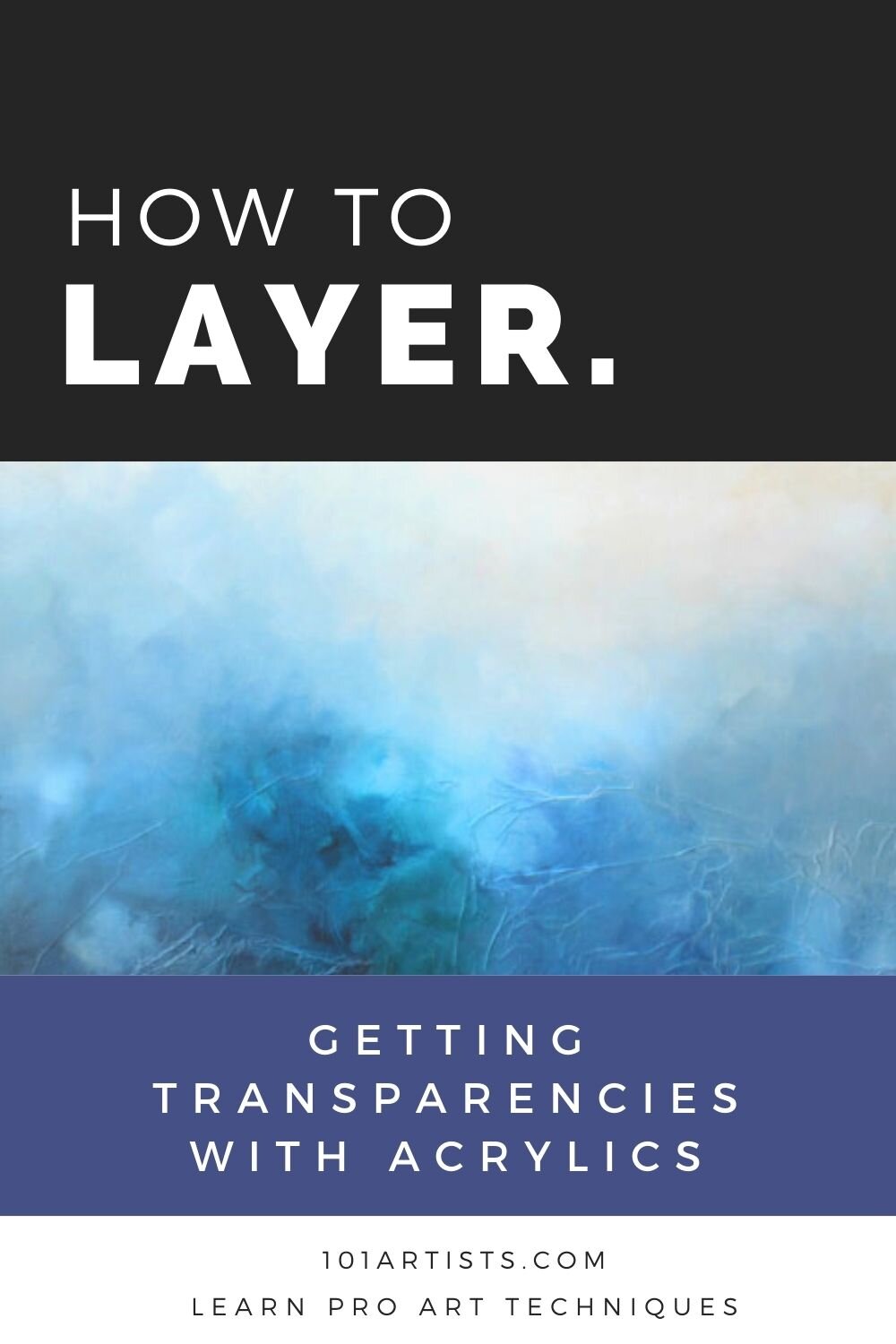One the the very best things I did for my painting was to discover, and USE, mediums!
If you’ve taken any of my courses/tutorials, you know I use these frequenetly to build textures as well as create transparencies with acrylic paints.
Acrylics are great.
However, they can be pasty, thick, plastic-y and not that appealing when now laid down properly.
One of the reasons people love watercolors is because they are washy and transparent.
One of the reason people oils is because they are soft and blended (usually).
This is one thing that acrylics, left on their own, are not: Washy, soft, blended
That’s where the wonderful world of mediums comes in!
For example, the painting shown below, was created with a series of blues. A bit of white, a drop of cream, but mostly all blues. Yet it looks layered and varied and not just, well, blue.
I’ll go over a few step I took to create this painting. If you would like to learn to create the entire painting, join my step-by-step tutorial BLISS
SOME OF THE COLOR USED: Partial list
FLUID ACRYLICS WERE USED, EXCEPT FOR THE WHITE
PTHALO TURQUOISE
SOME OF THE MEDIUMS USED:
I like various brands, but these are links to the exact brands/items I use
Always coat your canvas in a coat or two of TITANIUM WHITE. I like the brand linked above. It’s inexpensive and works great, especially when used to coat a canvas!
Then I laid down a texture. I let this dry.
I started layering blues, using the acrylic glaze to mix them in various strengths before application. I let them DRY THOROUGHLY between layers (key!).
HOW TO FIX A TROUBLE SPOT IN ACRYLIC ART PAINTING
This is a section of this course; I ran into a trouble spot and I show you how I worked it out
General mixtures: SATIN ACRYLIC GLAZE
1/2 glaze : 1/8 pigment = very light transparencies
1/2 glaze: : 1/4 pigment = deeper transparencies (and so on)
For gloss glazes, you can use the ratio above or add just a little gloss to the satin glaze mixture to give it a little glossy luster. If you want a LOT of gloss, just omit the satin and use gloss glaze alone!
I used each layers in a small section of the canvas, giving sections a “pop” of the color.
When done, I gave it a layers of my glazing “final” coat:
3/4 Satin glaze + 1/4 Gloss glaze + a little water (just a tablespoon or two)
Mix well and apply over the full dry painting with a flat brush. Let dry.
Varnish.
My favorite way to varnish a large canvas is with a spray varnish - outside! This stuff works great but it needs to be used in a very well ventilated area, or outside!
My favorite varnish is Winsor & Newton Satin Spray Varnish
I apply one coat horizontally across canvas. Cover all spots well. Let dry.
Turn canvas and then apply another coat so the varnish hits vertically and horizontally.
Let dry really well.


